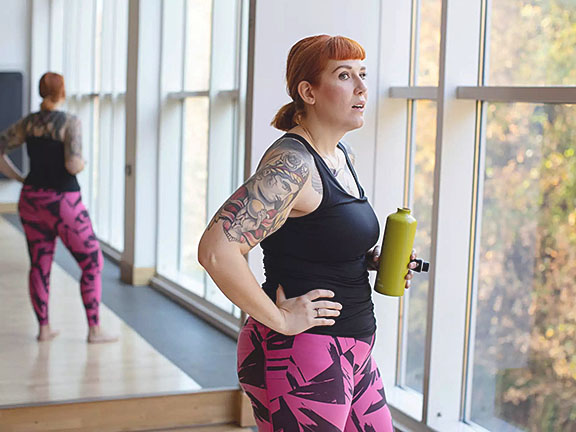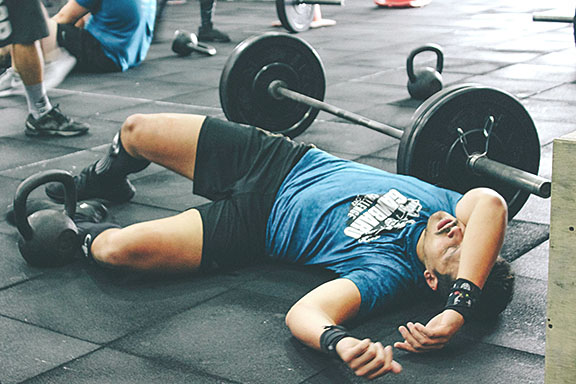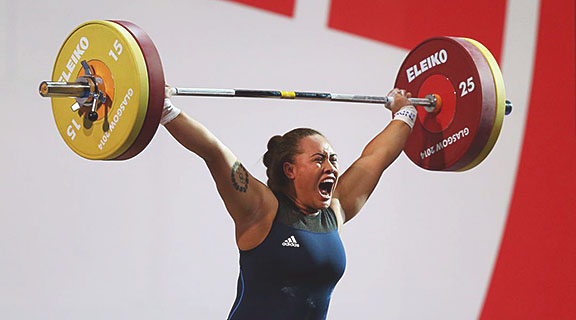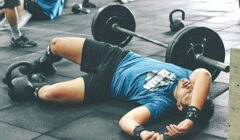More Exercise Isn’t Always Better
It’s probably not news to you that Americans just don’t exercise enough. In fact, less than half of us meet the recommended amount of weekly physical activity. Did you know that in some cases exercise can be just as effective as drugs to treat chronic conditions such as heart disease, diabetes, high blood pressure, osteoporosis, arthritis and much more? So why don’t we prescribe exercise in specific doses, like we would a drug?
In order to do that, we need to know exactly how much activity produces how much benefit, whether there’s an upper limit, and at which point the helpful effects either start waning or begin to do more harm than good.
What Does Intensity Truly Mean?
In most cases, intensity can be described as one’s perceived effort, but when it comes to lifting weights in the gym, intensity refers to the amount of weight lifted. When you increase the work load (the reps, weight and less time between sets), you increase the intensity. It’s as simple as that. In regards to aerobic exercise (I’ll use running as an example), sprinting on a treadmill is obviously far more intense than jogging. Doing as much as possible, as close to the maximum exertion you can put out, is intense.
Why Does Intensity Matter?
Intensity matters because oxygen consumption correlates directly to calories burned. When exercise is introduced into the mix, we consume more oxygen and therefore burn more calories. Are you more out of breath after walking or sprinting? After lifting a five-pound weight or lifting a twenty-five-pound weight? The harder you push yourself, the more oxygen you require and the more calories you will burn.
Short Bursts of Exercise Are Better Than Exercising Non-stop
This should be good news for those of you who think there isn’t enough time in your day to start an exercise program.
Believe it or not, exercise, like any other prescription, could be dangerous in excessive amounts. Studies have shown that individuals who have had a heart attack and ran more than thirty miles a week or spent more than six hours engaging in vigorous activity weekly were at an increased risk by up to twofold of dying from a cardiac event.
An Hour of Exercise Can Make Up for a Day of Sitting
In contrast, heart-attack survivors who exercised moderately (which is to say more than the admittedly low recommended minimum) lowered their risk of heart-related death by sixty-three percent compared to those exercising the least.
So, it’s safe to say that if exercise could have a positive impact on those with a history of heart disease the general population would benefit as well. The data collected through various studies could form the foundation for a prescription-based approach to exercise, as researchers become more familiar with how much exercise can influence factors that affect our health.
Is More Really Better?
So, if you work out harder in the gym will you get quicker results? Is working out for three hours better than just one?
Many of us want to take the easiest road to our destination, don’t we? We want to put in the least amount of effort and have that show stopping physique. However, working out longer or harder won’t necessarily get you results faster!
It’s Time to Change
Spending hours going through the motions of simply being at the gym without truly putting in the effort definitely won’t put you on the fast track to success, especially when you’re not making any progress. To many, ignorance is bliss. If your workouts haven’t produced any real results for weeks, months or years, why would you think they are going to start working now?
To get the best results, you should change up parts of your workout every three to four weeks depending on your experience level and the time of year. Remember to master your form for several weeks first and then change up the loading scheme more frequently.
By mixing up your activities, you give those overused muscles, joints, and ligaments a chance to rest and recover before putting them into action again. If you do get injured, performing a different activity that doesn’t strain the same part of the body will allow you to stay in shape and heal at the same time.

Effort Makes a Difference
Your workout is only as good as the effort you put into it and hard work comes in all levels of fitness. Hard work for you may be easy for me and much of it depends on the fuel you have in the tank, and the physical shape you are in.
Try not to pay too much attention to what everyone else is doing at the gym. Instead, focus on you and your goals! Everything else is less important.
Keep a Workout Journal
Have a plan before you hit the gym. Don’t hum and haw about what you’re going to do when you get there. Use a fitness app or keep a workout journal with you while you work out so you can write down everything you do (sets, reps and exercises). Keeping track of your workouts will allow you to use your time in the gym most efficiently.
Eliminate Distractions
Distractions will only slow you down! Leave magazines, cell phones, and friends (that are counterproductive to your workout) at home. Wear your headphones to help keep you focused and let other gym patrons know you mean business while you are there.
It’s All About Mindset
In order to maintain a healthy and active lifestyle, we must constantly remind ourselves of the ‘why’ because it is the force that drives us. I understand that not everyone likes working out. I get it. However, if you keep a positive mindset, you will have a better chance at getting the most out of your workouts. The good news is that going to the gym will only get easier as you develop fitness habits. From there on out, it’s much easier to stick to a routine.

The Bottom Line
It’s the “more is better” mentality that has been branded in the back of our minds as a result of decades of misinformation being fed to us by various publications. More is better only up to a point!
The secret to living an active life is making fitness a habit. You don’t have to spend hours in the gym working out to see results. More isn’t always better and the consequences of skipping a workout are much greater than the effort that it takes to show up and turn your life around. Good luck to you.











